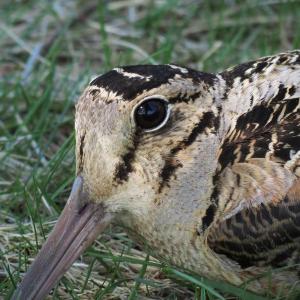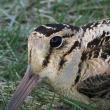Kristen Lindquist: Meditations on another early bird, the American woodcock
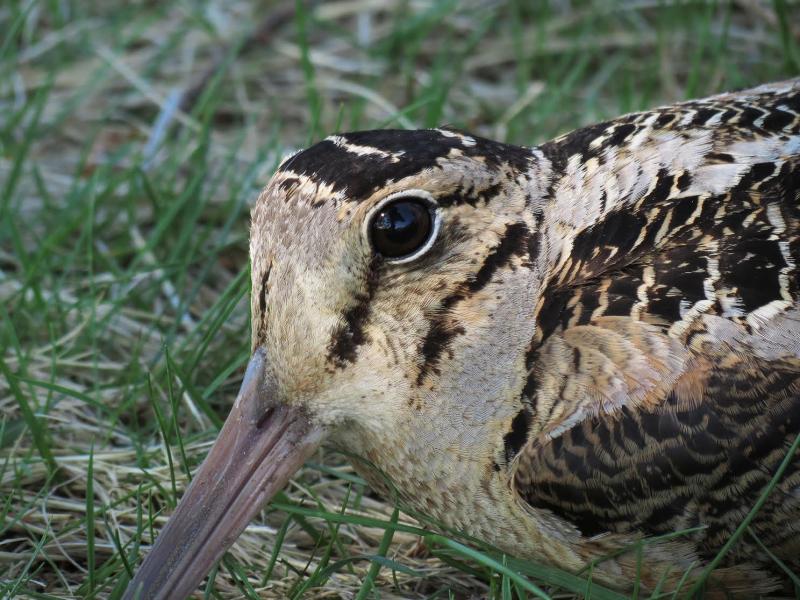 The woodcock's large eyes set high on their head give them one of the largest visual fields of any bird. (Photo courtesy Brian Willson)
The woodcock's large eyes set high on their head give them one of the largest visual fields of any bird. (Photo courtesy Brian Willson)
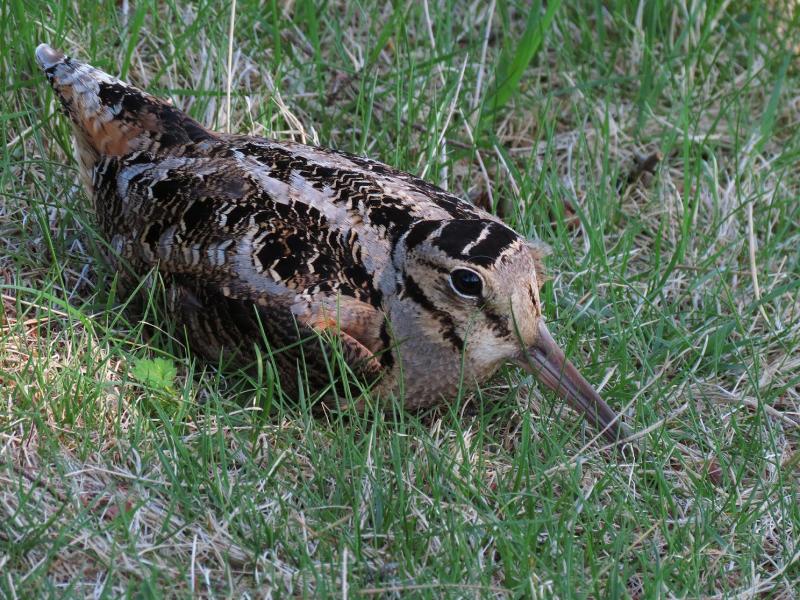 Most American Woodcocks arrive back in Maine in March and April. (Photo courtesy Brian Willson)
Most American Woodcocks arrive back in Maine in March and April. (Photo courtesy Brian Willson)
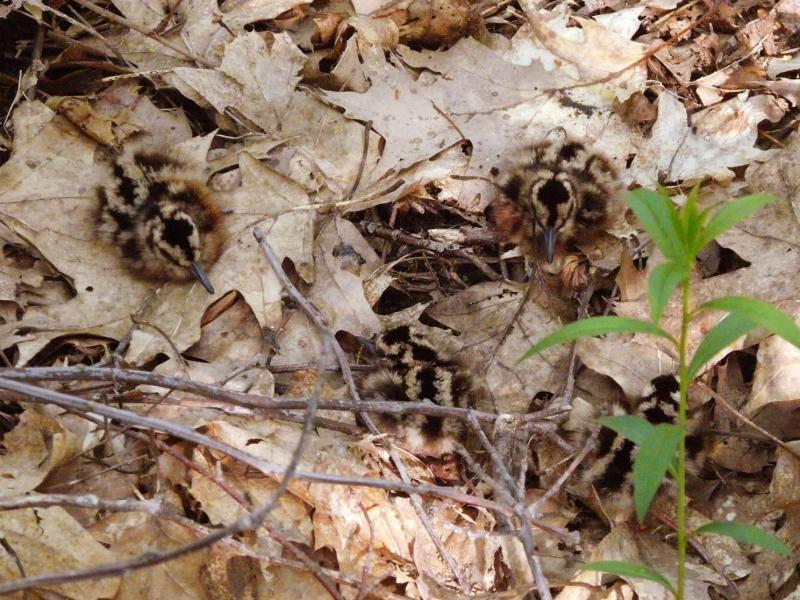 How many chicks can you find in this photo? (Photo courtesy Brian Willson)
How many chicks can you find in this photo? (Photo courtesy Brian Willson)
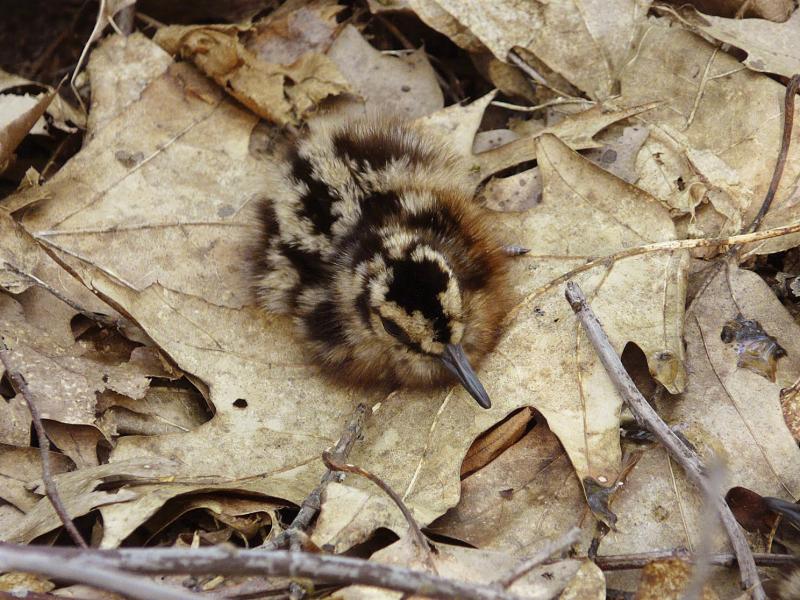 A chick's cryptic coloring and instinct to freeze when approached make it a challenge to see. (Photo courtesy Brian Willson)
A chick's cryptic coloring and instinct to freeze when approached make it a challenge to see. (Photo courtesy Brian Willson)
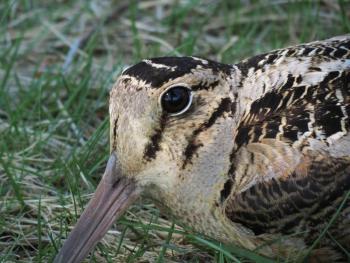 The woodcock's large eyes set high on their head give them one of the largest visual fields of any bird. (Photo courtesy Brian Willson)
The woodcock's large eyes set high on their head give them one of the largest visual fields of any bird. (Photo courtesy Brian Willson)
 Most American Woodcocks arrive back in Maine in March and April. (Photo courtesy Brian Willson)
Most American Woodcocks arrive back in Maine in March and April. (Photo courtesy Brian Willson)
 How many chicks can you find in this photo? (Photo courtesy Brian Willson)
How many chicks can you find in this photo? (Photo courtesy Brian Willson)
 A chick's cryptic coloring and instinct to freeze when approached make it a challenge to see. (Photo courtesy Brian Willson)
A chick's cryptic coloring and instinct to freeze when approached make it a challenge to see. (Photo courtesy Brian Willson)
As a self-identified "bird nerd," this is how I enjoy spending my spring vacation: On a picturesque island, after a lovely seafood dinner with friends, I don my down parka, hat, and gloves and head back outside into the chilly twilit evening. But rather than heading back to my cozy room, I hike to the edge of a wide, grassy field so flat that it sometimes serves as a helipad. There, I crouch on the edge of the grass and listen.
This is no "lose yourself in the universe" moment of meditation. For one thing, I'm too cold. I've also got my ear cocked for something very specific. After about 15 minutes of waiting and shivering, I think I hear it. Peent. The low, buzzy sound is so far away, I'm not sure. But then, after five more minutes, another peent, closer, emanates from across the field. Woodcock!
There's just enough lingering light that I can make out its small, buff-bellied, bobbing form about 20 yards away in the field. The American Woodcock is about the same size as a robin, but its shorter legs and lower center of gravity make it appear dumpier.
Bird pro Pete Dunne describes it as "softball-sized," which hints at the bird's shape, and as "a meatloaf on a stick." While the woodcock is hunted (and eaten) as a game bird, the latter descriptor is not a reference to the way it tastes.
If you saw a woodcock out of context you might rightly guess by its distinctive long bill that it's a sandpiper. But you won't find it darting across the sand on any beach. This nocturnal bird hides itself on the deciduous forest floor, preferring damp alder and poplar thickets. You have to virtually step on one to flush it.
A friend and I once blundered onto a woodcock nest while conducting an off-trail bird survey on Beech Hill Preserve in Rockport. The mother hen flushed, nearly giving me a heart attack, and her many chicks scattered by crawling away in different directions and then freezing in place.
The mottled down of a woodcock chick camouflages it perfectly on the ground, making it nearly impossible to see even when you know it's there. (My grandmother would have said these tiny patterned balls of fluff were "awful cunnin'"—in other words, mega-adorable.) The grey, black, and brown feathering of the adult's upper parts also serves as ideal camouflage for a ground-hugging bird—when motionless, only the glimmer of its unusually large, dark eyes might give it away.
Making use of those large eyes, the woodcock ventures out at dusk into open spaces to feed, probing the soft earth for its primary food, earthworms. The tip of the bird's bill is specially adapted to grab and pull up worms. Here in coastal Maine people occasionally notice a woodcock, often referred to as a timberdoodle, when there's still a significant amount of snow on the ground. When the ground's frozen, the early bird doesn't get the worm. These early arrivals subsist on whatever bugs or other meaty bits they can find.
It's not just a love of worms that impels a male woodcock to venture into the chilly island field where I watch and listen under darkening skies. It's Love with a capital L. Spring is the time for the woodcock's aerial courtship ritual, the wacky sky dance he does to show off for the ladies. On a good, moonlit night he'll carry on for hours, and if any female expresses interest, he'll mate with her. He's not picky.
That aerial show is why I'm hanging out in a darkening field instead of in my bed reading a good book. And I've got a front row seat. After a few more repeated peents, the woodcock across the field takes to the air. One minute his round body is there, the next it's not, and the only indication of his location is a series of frenzied, high-pitched twitters erupting in the air over my head. I can barely make him out as he spirals higher and higher. This goes on for well over ten seconds. Then, the avian softball plummets erratically to the ground, as if he'd been shot down, chirping loudly and rhythmically as he descends. There's a brief moment of silence. I scan with my binoculars the exact spot where I'd first seen him, and—peent—there he is again: bobbing, strutting his stuff, working himself up for his next performance.
The vibration of wing feathers produces the twittering portion of this crazy aerial display, so it's a real, full-body song-and-dance show. I watch and listen for what seems like a long time. When I can longer see the bird and am too cold to appreciate his strange and beautiful springtime music, I head back down the trail.
Enjoy audio and video of the peent calls and sky music of the American Woodcock at: https://musicofnature.com/video/american-woodcock/
 Kristen Lindquist is an amateur naturalist and published poet who lives in her hometown of Camden.
Kristen Lindquist is an amateur naturalist and published poet who lives in her hometown of Camden.
• Meditations on an unlikely harbinger of spring
• Meditations on the Snow Goose
• Sky-watching during the holiday season
• Understanding the Aurora Borealis
• Get to know the constellation Gemini
• Celebrate September’s full moon
• Northern Sky basics with the Big Dipper
• Early Christmas morning: Look up! A full moon, and Orion bright in the sky
Event Date
Address
United States

